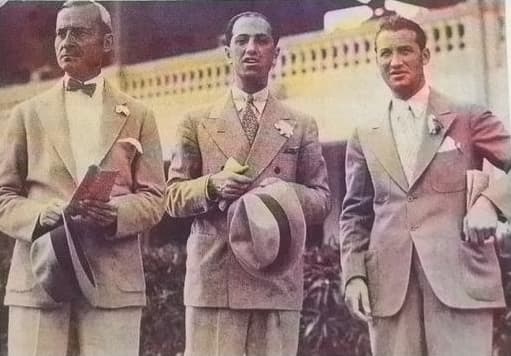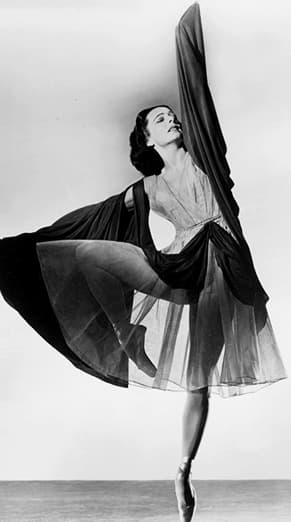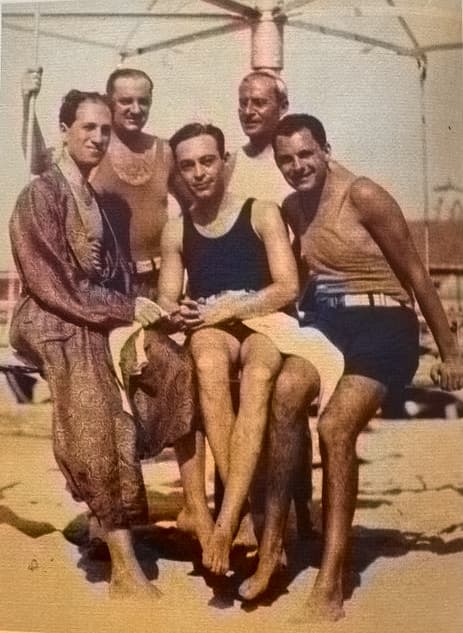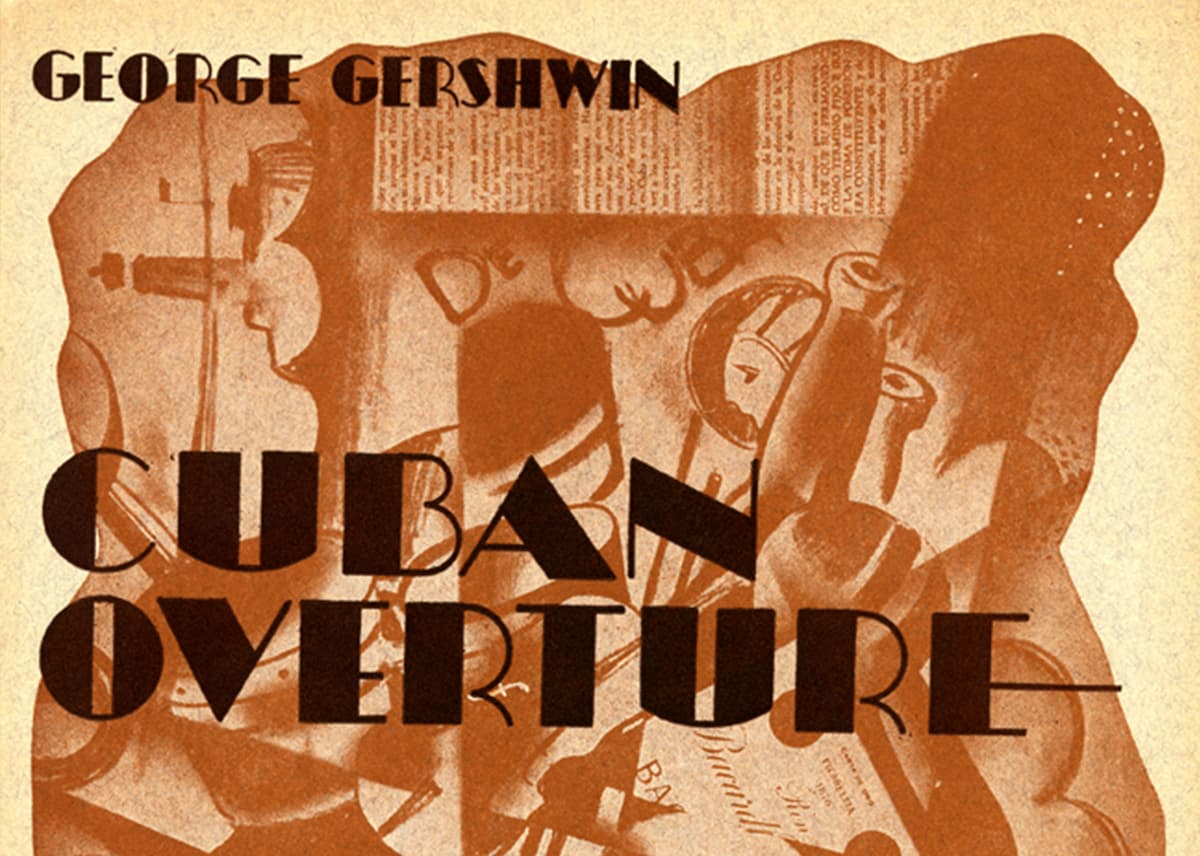Escaping his hectic work schedule in 1932, George Gershwin visited Havana, the capital city of Cuba. At that time, Cuba was a highly popular tropical retreat for wealthy Americans, “as well as a convenient place to consume liquor during the days of Prohibition in America.” And Gershwin certainly didn’t hold back. On this bachelor trip, he was accompanied by a number of friends, including Ev Jacobs, Emil Mosbacher, and the writer Bennett Cerf.
Gershwin’s Vacation in Cuba

Gershwin and friends in Havana
They stayed at the old Almedares Hotel in Havanna and at four on their first morning, they were awakened by a sixteen-piece rumba band, which had heard of Gershwin’s arrival, and had come to serenade outside his bedroom window.
Not every hotel guest was overjoyed, but Gershwin was predictably flattered and decided to write some music of his own. He was less flattered by an attractive young Cuban woman who stood him up over a luncheon date. Gershwin did see her that afternoon on the terrace of the Yacht Club. “Hey,” he said, “you stood me up today.” The girl was apologetic and explained that she meant to phone and tell him, but “that she simply couldn’t remember his name.” It is said that Gershwin was depressed for days. Under the hot tropical sun, however, all was quickly forgotten as he played golf, took extensive boat trips, gambled a good deal in the local casinos, visited the races, and was a frequent guest at various dance parlors.
George Gershwin: “Cuba was most interesting to me”

Ruth Page
Gershwin attended a dance recital by Ruth Page, who freely danced to the second of the Three Preludes in his honor. As he later wrote to George Pallay, “I spent two hysterical weeks in Havana where no sleep was had, but the quantity and the quality of fun made up for that. Cuba was most interesting to me, especially for its small dance orchestras, who play the most intricate rhythms most naturally. I hope to go back every winter, if it is possible, as the warm climate seems to be just the thing my system requires for relaxing purposes.”
A Fascination With Cuban Music

Gershwin and friends in Cuba
The newspapers quickly got wind of Gershwin’s visit and the Havana Post reported, “The siren call of Cuban music with its odd rhythms and plaintive melodies has lured George Gershwin to Havana in search for new inspirations.” Gershwin had long held a fascination for Cuban music, and the rumba in particular. In fact, the rumba had taken American audiences by storm as it had been the first Afro-Cuban music that had been absorbed into the mainstream. It represented, according to scholars, “a notable cultural watershed that anticipated the popularity of the conga, the mambo, the salsa, and other dances.”
Interestingly, the rumba features not a single drum set but a percussion ensemble that variously included maracas, cowbells, bongos, conga drums, claves, and guiros. Once Gershwin had decided to compose his own musical impression, he went in search of native instruments and took them home for study. Back home in New York, he created an orchestral souvenir of his trip in a matter of weeks, and he finished the score, initially titled Rumba on 9 August, a mere week before its first performance.
The Premiere of “Rumba” (Cuban Overture)

Gershwin’s Cuban Overture
The work premiered on 16 August 1933 in the first-ever all-Gershwin concert. Nearly eighteen thousand people were in attendance, with another five thousand turned away. Gershwin called it “the most exciting night I have ever had.” Gershwin provided a brief program note and wrote, “Rumba was inspired by a short visit to Havana, and it combines the Cuban rhythms with my original thematic material. The result is a symphonic overture which embodies the essence of the Cuban dance.” Gershwin does employ polytonality and spicy dissonances, but his writing is more austere. The work was popular from the beginning, as it “represented experimental explorations of a new means of expression.” Gershwin later said that he saw in Rumba “a manner in which he wished to work in the future.”
Gershwin changed the title to Cuban Overture before a repeat performance on 1 November. As he explained, “when people read rumba, they expect something like a peanut vendor. Cuban Overture gives a more just idea of the character and intent of the music. In my composition, I have endeavored to combine Cuban rhythms with my own thematic material. The result is a symphonic overture which embodies the essence of the Cuban dance.”
For more of the best in classical music, sign up for our E-Newsletter
